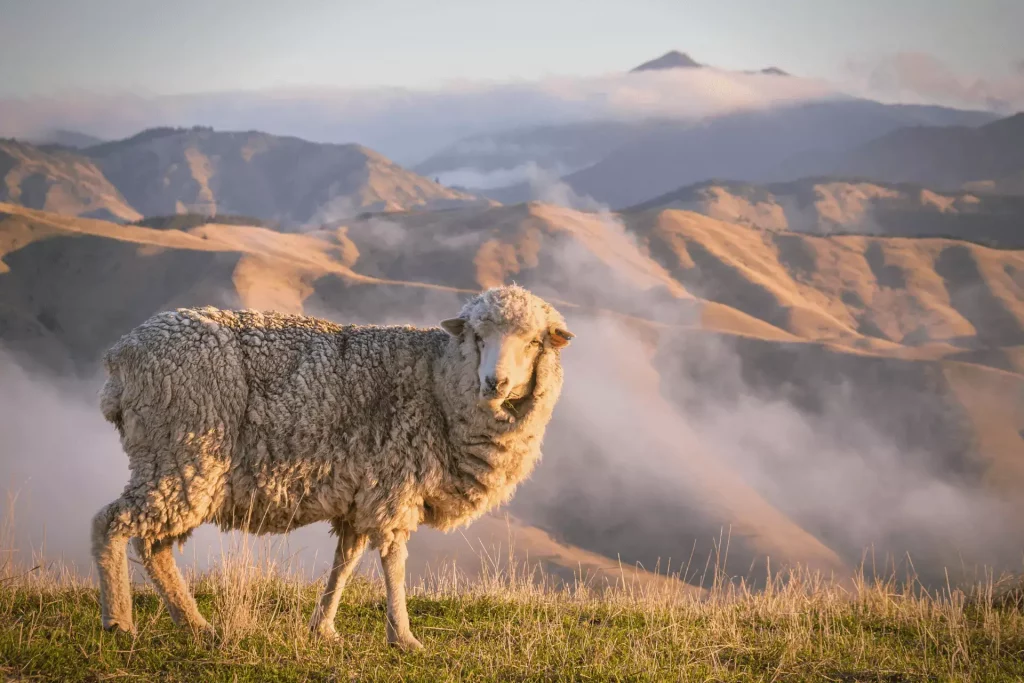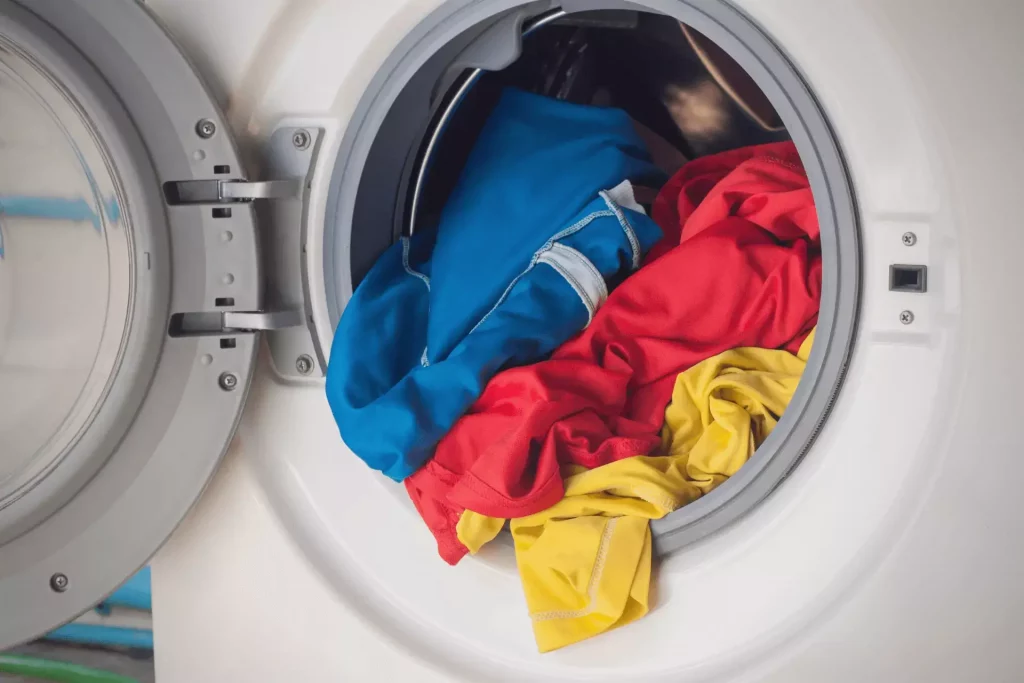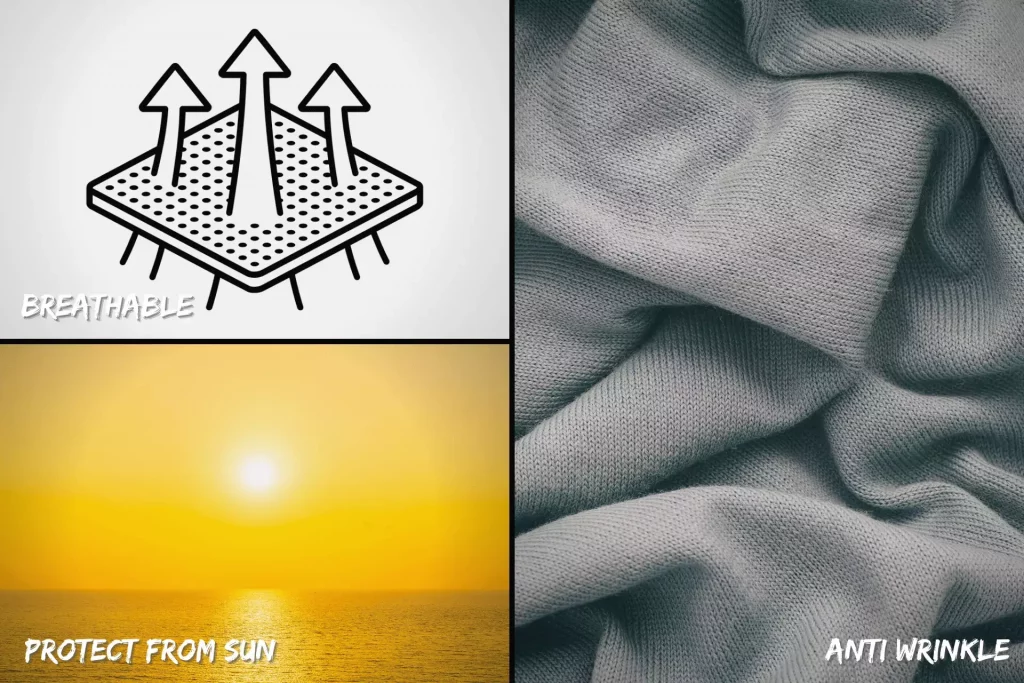Unbelievably, our apparel is one of the most significant sources of plastic pollution globally. However, we’ve made tremendous steps toward purchasing recycled apparel.
We may not be aware that even the act of washing our favorite pieces adds to the global ocean plastic endemic problem microplastics from our garments filter out of our washers and into our seas, where they may accumulate and cause damage to our marine ecosystems.
The fight against the microplastic catastrophe is generating fresh ideas for how we may rescue our world while still looking fashionable at the same time.
Consider Merino wool, which is a form of wool that is recyclable, renewable, and organic in its construction and composition. Considering the fabric’s environmental efficiency and high composition, it’s no surprise that it’s catching the fashion world by storm.
Merino wool is a subject of intense controversy because of its long-term viability. Merino wool is considered one of the most ecologically friendly fabrics available; however, some individuals questions merino wool sustainability and believe it is not as environmentally beneficial as you might expect. The advantages and disadvantages of merino wool will be discussed in this post, and we’ll determine whether or not it’s a sustainable material for your apparel needs.
Table of Contents
What is Merino wool?

On the other hand, Merino wool originates from a rare variety of sheep, which happens to be named—you guessed it—Merino. All wool fleece is theoretically renewable because it is taken from sheep and regrows each year.
However, the finer the wool produced by Merino sheep during the process is superior to any other sheep breed. Because the strands from Merino sheep measure around one-third the diameter of human hair, they may be readily woven into high-quality, comfortable clothes with little difficulty.
Environmentally Beneficial Effects:
Renewability:
A renewable resource is any animal byproduct produced by an animal that can survive in its natural habitat. Merino sheep forage on grasses in their natural environment and drink water from springs.
Woolgrowers gather their sheep into a shearing shed when it is time to be shorn (usually once a year). They shave their fur and return them to their natural habitat. Because the wool coat regrows during the year to shield the sheep from the elements, the farmer does shearing the sheep every few months.
Ewes give birth to lambs, and the entire renewable wool growing cycle continues. It’s all part of the natural cycle of life. Merino sheep produce raw fleece (also known as greasy wool) is around 20 pounds per year.
Selecting, cleansing, scrubbing, processing, and manufacturing contribute to losing around half of the product’s total weight. One merino sheep may generate enough wool for more than 100 outfits throughout its 12-year career (assuming a 1-pound per garment weight).
The same amount of garments would require around 126 gallons of oil to be produced. It is possible to fuel a medium automobile for 840 miles with the same amount of oil.
Assistance With the Carbon Cycle:

As you are surely aware, the greater the amount of free carbon in the air, the more severe the impacts of global warming. The only way to lower the amount of carbon in the atmosphere is through sequestration, which plants mostly accomplish. The plants remove the carbon from the atmosphere, which the sheep subsequently consume.
While this may appear to be a regular procedure, wool generally has a significantly greater carbon composition when compared to other types of cloth. Organic carbon accounts for almost half of the carbon in Merino wool, making it even more carbon-intensive than plant-based materials such as cotton (40 percent).
Biodegradability:
In contrast to synthetic materials, which take up valuable landfill space, Merino wool decomposes and returns to the environment. According to scientific studies, wool degrades spontaneously in around four months in normal settings and even more quickly in warm and damp situations.
It is composed of keratin, the same material found in human hair, and as a result, microbes such as bacteria and fungus feed on it down to its basic components. As a result, critical plant nutrients such as nitrogen, magnesium, and sulfur are released back into the soil as waste.
Wool has been used as a plant fertilizer by many civilizations for hundreds of years. According to a recent study, shredded wool rugs sprinkled on the garden can enhance crop output by 400 percent.
It is important to note that the good effects of wool’s biodegradability do not end there. When wool is entrenched in the soil, it helps minimize erosion by encouraging more plant life and biodiversity. This is because wool has high water retention capabilities.
Merino wool degrades in both freshwater and marine settings! As a result, it does not add to the ever-increasing pollution problem that plagues our seas.
Less Washing:

The average American family completes approximately 8–10 loads of washing per week using 30-40 gallons per load. This translates to over 15,000 gallons of water every week, equivalent to the water required to fill a 24-foot above-ground pool!
Clean water is currently considered a luxury item. Combined with the millions of microplastics leaking into our rivers, the excessive energy consumption of laundry machines does not bode well for our seas. Generally speaking, washing your clothes less frequently is healthier for the environment.
Merino wool has several outstanding characteristics, one of which is that it is inherently odor-resistant. The fibers themselves are hydrophilic, which means that they attract water while repelling oils such as those released by bacteria that cause sweat to form.
More Wearing:
Was it ever brought to your attention that the fashion business accounts for around 10% of global emissions? In addition, roughly 85 percent of all cloth created is disposed of in landfills.
That is ridiculous! So the most important sustainability issue in clothing is that the longer you wear your clothes, the less you buy in the future, and the less waste from the farm to fashion process is produced.
This has been proved by seven-year scientific research published in The International Journal of Bio Cycle Assessment. Wool garments that were thrown away after only Fifteen wears were responsible for roughly six times the quantity of pollution produced by clothes worn more than 100 times during their lifetime.
Furthermore, if the garment lifespan were increased to 400-lifetime wear, it would reduce 49 – 68 percent of total emissions.
When you use Merino wool, you’ll wash your clothes less often and get more use from them if you take excellent care of them. As a result, simply by wearing your garments for a longer period, you will be helping to reduce greenhouse gas emissions.
Environmentally Negative Effects:
Overgrazing:

As the popularity of Merino wool has increased, so has the overall number of sheep required to meet the growing demand for it. The greater the amount of sheep grazing, the greater the land required.
The usual notion is that farmers can sustain around five sheep per acre of land under their care and attention. Considering the overall amount of useable grazing area in Australia, it is possible to maintain around 250 million sheep. The current number is around 70 million, so overgrazing is not a problem, correct?
Overgrazing is more than just the fact that the sheep consume an excessive amount of vegetation. It indicates that they are devouring specific plants in specific locations, resulting in a lack of biodiversity.
In a natural ecosystem, the natural diversity of plants offers a diverse range of nutrients to the soil, allowing it to remain productive for agricultural purposes.
When animals such as Merino spend excessive time in a given region, they increase soil salinity and lose biodiversity, resulting in soil erosion.
Overgrazing has resulted in the degradation of over 20% of the world’s pasture lands, resulting in the formation of badlands. Argentina’s Patagonia area used to be the world’s second-largest wool producer, behind only the United States. However, as farmers attempted to fulfill global wool demand by increasing flock sizes, the land became overgrazed.
According to the United Nations Environment Program, an estimated 93 percent of pastureland has been decertified. Argentina is currently just the fifth-largest wool producer globally, accounting for barely 3% of the worldwide market in this sector.
While Australia may have its act together to reduce overgrazing, there has already been some harm done. We’ll go into this in more detail later, but for the time being, consider implementing regenerative agricultural approaches by farmers.
Livestock Emissions:
Merino sheep emit a lot of methane, which contributes to global warming, even though they produce wool that helps to absorb carbon from our atmosphere. According to research, sheep emit an average of 4.9 kg of methane per year.
In addition, it has been demonstrated that methane is 84 times more effective as a greenhouse gas than carbon dioxide, according to recent research.
In Australia alone, there are over 70 million sheep. These sheep contribute 28.8 million tons of CO2 (343,000 metric tons of methane) into the atmosphere each year.
According to the Environmental Protection Agency, this amounts to the same amount of greenhouse gas emissions each year as the energy usage of one million residences.
It is believed that sheep account for 90 percent of the nation’s greenhouse gas emissions in New Zealand, according to government estimates.
In 2003, the government contemplated imposing a significant levy on sheep ranchers to recoup their costs. As the Fart Tax – as it will always be known – did not sit well with local farmers, it was removed from consideration by the legislature.
The Supply Chain:

The farm-to-fashion process may appear to be something you are familiar with. However, several processes in the supply chain might result in the production of undesired byproducts. There is also all the sorting of additional wool fleece to be completed.
There’s the cloth that’s going to be removed. Don’t forget about the other remaining byproducts from the manufacturing process.
Additionally, Merino wool is a worldwide fabric that contributes to reducing waste. In the case of an Australian Merino, the fleece may be sent to China for processing, then to Vietnam for spinning, then to Cambodia for garment manufacturing, and lastly over the Pacific to your door.
Transferring the Merino is a costly endeavor that is not always favorable to the animal’s environmentally friendly attributes.
Dying and Processing:
You would believe that the Merino wool garment-making procedure is straightforward: shear, spin, weave and sew. However, this is not the case. If you are gathering wool for your use, this may be true. On the other hand, the Merino wool business employs more energy and resource-demanding techniques.
It is necessary to scout or wash the wool after it has been carded and separated to remove oil, pesticides, and other organic debris (we are talking about feces) from the fleece before being used.
It has been projected that this technique will consume around five cubic liters of water per kilogram of wool and the usage of powerful cleaning chemicals.
There is a possibility that these chemicals and toxic organic compounds will become suspended in the effluent. If they are not adequately handled, they have the potential to be reintroduced into the water supply.
Additionally, the process of dyeing the wool might result in undesirable byproducts. Heavy metals such as chromium are used in many industrial colors used in the wool industry. They may also seep into the water supply if they are not managed properly.
Most of today’s Merino is dyed with natural dyes or even less damaging acidic chemicals rather than synthetic dyes. However, it’s crucial to remember that these solutions are often more expensive, and smaller businesses may choose to save money by using less environmentally friendly alternatives.
What Efforts Are Merino Wool Producers Making to Promote Sustainability?

“sustainability” has become a household term in today’s environmentally conscious culture. Firms utilize phrases such as sustainable, green, and eco-friendly, among others, as a marketing gimmick rather than as accurate representations of their products.
However, a few firms and organizations out there are committed to the long-term viability of Merino wool.
What Makes It So Long-Lasting?
The most important thing about Merino wool is a completely natural, renewable, and biodegradable fiber. That implies it can biodegrade on land and in water, and it doesn’t release any plastic particles when thrown away or cleaned, as opposed to other plastics.
Even if you dispose of the wool, it will take around a year to decompose in the ground. However, because the cloth is biodegradable, the soil will absorb the amino and proteins and recycle them back into the soil.
However, although growing sheep has a carbon footprint, if Merino sheep are maintained on farms that follow regenerative agriculture principles, they may make the soil healthier while generating this sustainable fiber—this adds a whole new level of complexity to the effort to reduce our environmental effect.
Merino wool is also known for its long wear and low maintenance needs. Because it lasts far longer than other fibers, it accounts for around 5 percent of all apparel given to charitable organizations.
Even though this fabric will not shed any microplastics during the rinse cycle, you will discover that you will not have to wash Merino wool as frequently, resulting in a reduction in water use.
What Are Some of the Additional Advantages of Utilizing Merino Wool?

However, despite its great environmental benefits, this type of wool outperforms all others in comfort and performance, among other qualities.
It is a versatile fiber that can be used in the production process. It offers a diverse range of advantages for various applications.
After all, sheep have been “wearing” this cloth for their whole lives, and they appear to be quite content acclimating to any environment, from chilly regions to scorching heat.
1. Anti-Wrinkle:
Moreover, because it is made of such fine fabric, it is extremely soft and even has a built-in resistance to creases. It isn’t prickly that you might think a warm sweater to be. It’s so light that it can’t even support the weight of the wearer.
2. Breathable:
This sort of wool is porous, which means that it may absorb sweat and moisture and convey it in the form of vapor to the outside world. Synthetic fibers might make you feel sweaty and chilly if exposed to the elements. However, Merino wool can keep you dry and warm after an intense workout or a camping trip in the hills.
3. It Can Protect You From the Sun:
Compared to other clothing types, merino wool clothing might provide UV protection. Since this natural fiber has historically been responsible for sheltering sheep from the sun, it has the potential to do the same for us as well.
Several outdoor clothing companies have integrated this fiber into their collections since it can absorb ultraviolet rays from the sun.
Is It Possible to Purchase Ethical Wool?
It is possible to come across standards and certificates that promise to assure the fair treatment of animals while shopping for wool. Examples of such standards and certifications are The Ethical Wool Standard and The ZQ Merino Standard.
These criteria, however, do not exclude the slaughter of sheep or the practice of winter lambing, which are both permitted. While the ZQ Merino Standard website does not specify pain management for tail docking or castration, the Sustainable Wool Standard does.
If we didn’t breed farmed animals so intensely, we wouldn’t have to resort to these techniques, and we would never think it acceptable to chop off the tail of a cat or a dog, even with pain treatment. It is against the law in many jurisdictions.
If you really must have wool, choose vintage, pre-loved, or recycled wool items that do not contribute to any of the problems that sheep and the environment are experiencing while also reducing waste in landfills.
Frequently Asked Questions:
What is it about merino wool that is so wonderful for the environment?
The most important thing to know about Merino wool is that it is a completely natural, renewable, and biodegradable fiber. That implies it can biodegrade on land and in water, and it doesn’t release any plastic particles when thrown away or cleaned, as opposed to other plastics. Even if you dispose of the wool, it will take around a year to decompose in the ground.
Is sheep wool a renewable resource?
Sheep are an important component of the natural carbon cycle, eating the organic carbon contained in plants and converting it to fiber for use in clothing. Wool is composed of pure organic carbon, accounting for 50% of its weight. Wool is easily recyclable: although having a market share of only 1.3 percent of all textile fibers, wool accounts for a whopping 5 percent of the market for recycled fibers!
When it comes to ecology, is Merino wool a problem?
Wool from merino sheep is a natural fiber ecologically friendly, biodegradable, and a great thermoregulator, among other characteristics. It is simple to wear near the skin since it is naturally thinner and smoother than any other wool. It maintains your body at a pleasant temperature no matter what the weather conditions are like outside.
Wrapping it Up:
Wool from merino sheep is a durable, ecologically friendly fabric rising in favor of the fashion sector. Compared to other textiles, its advantages include its recyclability and organic content, making it an environmentally beneficial choice.
However, the long-term feasibility of the project is still up in the air. Some individuals feel that it is not as environmentally friendly as it appears, while others claim that the benefits to the environment exceed the drawbacks of the practice.
We hope you have found this blog to be educational and that you have decided whether merino wool is a good material for your wardrobe needs.

